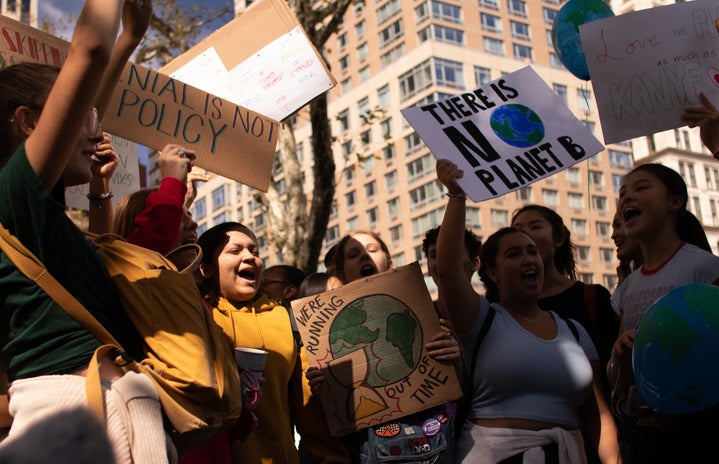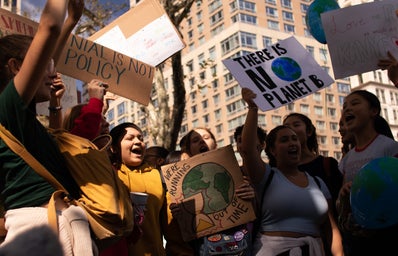Since the humble beginnings of John Muir’s Sierra Club in 1892, the United States’ environmental movement has taken many different angles and efforts to save our planet.
Following environmentalism’s resurgence in the ‘60s, the purposes and goals of the movement have changed and evolved, reflecting not only what the earth needed at the time but also the changing values of the government and the public and the way they interacted.
Here’s a decade by decade compilation of the various ways individuals, governments, corporations and nonprofits have interacted to further the cause of saving the planet.
1960s – Bringing Issues to Light
In 1962 Rachel Carson published Silent Spring, a book that revealed the effect of pesticides on the environment.
It spurred public outrage and grassroots campaigns to ban the use of DDT, a particularly harmful pesticide in the United States.
The book called attention to the ways that corporations, if left unchecked, can seriously harm both humans and the environment.
History looks back at this book as the catalyst that started the modern environmental movement.
1970s — Education & Individuals
1970 brought the first Earth Day, which included teach-ins throughout the country to educate people about environmental issues.
This activism led to the creation of the Environmental Protection Agency and soon, the phrase “Reduce, Reuse, Recycle” came into use.
Today, the phrase makes the rounds through elementary school classrooms and into children’s television shows, emphasizing the importance of the individual’s role in conservation.
The early ‘70s also saw the infamous anti-pollution commercial by Keep America Beautiful that featured a Native American man shedding a tear over the amount of litter around him.
This ad worked to shift the responsibility of environmental preservation onto individuals, as opposed to the anti-pesticide movements of the ‘60s that emphasized government and corporate accountability.
1980s — Radicalism, Greenpeace and Environmental Justice
In the 1980s, radical groups like Greenpeace decided the environmental movement was stalling.
So, took the issue into its own hands to directly call for change.
Greenpeace is most famous for its radical anti-whaling endeavors during the ‘70s, but it also led the fight against nuclear power in the ‘80s, taking actions like occupying a French nuclear power plant.
The ‘80s saw an overall rise of environmental justice, which called to attention the way poor and minority communities often had to endure the harmful environmental effects of factories. People pushed back at this fact.
1990s — Conventions, conventions…and more conventions
The 1990s brought the beginning of the environmental concerns we are most familiar with today, like global warming, the depletion of the ozone layer and acid rain.
At the 1992 Earth Summit, members of the United Nations considered issues such as harmful vehicle emissions and the link between fossil fuels and climate change.
In 1996, the Kyoto Protocol extended these considerations into a treaty that committed states to reduce greenhouse emissions.
While the ‘90s did not necessarily contain defining environmental movements as in previous decades, it began creating the foundation for the way both the public and international officials consider climate change today.
2000s — Hybrids, Light Bulbs, and Disney Channel
The discoveries of the ozone layer and greenhouse emissions in the ‘90s led to innovations in the early 2000s.
In 2001, the Toyota Prius became the first mass produced hybrid car sold worldwide.
In 2007, sales of energy efficient Compact Fluorescent Lightbulbs (CFLs) reached new heights.
Also in this decade, a reminiscent of the three R’s encouraged kids to take action to help save the planet.
Miley Cyrus, the Jonas brothers, and a handful of other Disney Channel actors at the time instructed their audience to take shorter showers and bring their own lunch bags to school, emphasizing the impact that collective action could have.
2010s to Today — Straws, Veganism and Big Business
Today, the environmental movement seems to have two polarizing schools of thought. One maintains that individuals can and should make a difference, in any way possible — whether by minimizing plastic waste through metal straws and Hydroflasks, limiting animal products through Meatless Mondays (or just becoming vegan entirely), or staying away from fast fashion.
The other uses the finding from The Carbon Majors database, which claims that just 100 companies are responsible for 71% of carbon emissions, and insists on the fruitlessness of any individual conservation efforts.
Instead, they believe, it is up to the government to fix what the endless pursuit of profits has produced.
In the years since Rachel Carson’s Silent Spring, the environmental movement has had many purposes and goals, and has seen governments, organizations, and individuals alike alternate taking responsibility for saving the environment.


